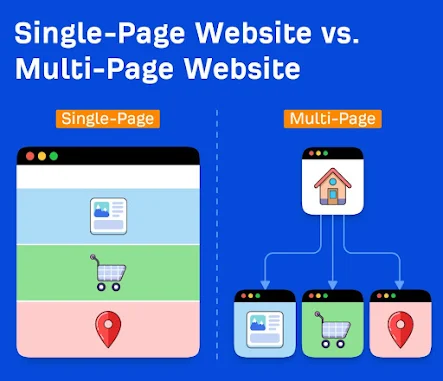Optimizing large websites with thousands of pages can present unique SEO challenges, but with the right strategies in place, you can effectively manage these complexities. Here’s a breakdown of common challenges and strategies to address them:
### SEO Challenges for Large Websites
1. **Crawl Budget Management**
- **Limited Crawl Budget:** Search engines allocate a specific crawl budget for each site, which can lead to important pages being overlooked if the site is too large.
2. **Duplicate Content**
- **Redundant Pages:** Large sites often have similar or duplicate content across multiple pages, leading to potential penalties or lower rankings.
3. **Internal Linking Structure**
- **Complex Navigation:** Large websites can have complicated navigation, making it difficult for users and search engines to find important pages.
4. **Content Quality Control**
- **Varying Content Quality:** Maintaining high-quality content across thousands of pages can be challenging, leading to inconsistencies in user experience.
5. **Site Speed and Performance**
- **Loading Times:** Large sites may experience slower loading times, which can negatively impact user experience and SEO.
6. **URL Structure and Management**
- **Complex URLs:** Managing a clean, descriptive URL structure can be difficult with thousands of pages, leading to potential issues with indexing.
7. **Tracking and Analytics**
- **Data Overload:** Analyzing performance data from a large site can be overwhelming, making it challenging to identify actionable insights.
8. **Changes and Updates**
- **Frequent Changes:** Updating content or site structure can lead to broken links or improperly redirected pages if not managed carefully.
### SEO Strategies for Large Websites
1. **Conduct a Comprehensive Site Audit**
- **Regular Audits:** Perform regular audits to identify issues such as broken links, duplicate content, and pages with low engagement metrics. Tools like Screaming Frog, SEMrush, or Ahrefs can be helpful.
2. **Optimize Internal Linking**
- **Strategic Linking:** Create a clear internal linking strategy that connects related content, helping users and search engines navigate the site more effectively.
- **Important Pages First:** Prioritize linking to high-value pages to ensure they are crawled and indexed.
3. **Manage Duplicate Content**
- **Canonical Tags:** Implement canonical tags to indicate the preferred version of duplicate or similar content.
- **Content Consolidation:** Where possible, consolidate similar content into a single page to improve clarity and SEO effectiveness.
4. **Utilize a Clean URL Structure**
- **Descriptive URLs:** Maintain a logical and descriptive URL structure that reflects the hierarchy of your content. Use keywords in URLs where appropriate.
- **URL Redirects:** Use 301 redirects for any pages that are moved or removed to avoid broken links and preserve link equity.
5. **Enhance Page Speed**
- **Performance Optimization:** Optimize images, minify CSS and JavaScript, and use caching strategies to improve loading times.
- **Content Delivery Network (CDN):** Consider using a CDN to distribute content and speed up access for users across different regions.
6. **Implement a Structured Data Strategy**
- **Schema Markup:** Use structured data (schema.org) to help search engines understand the context of your pages better. This can enhance visibility in search results through rich snippets.
7. **Prioritize Content Quality**
- **Quality Control:** Establish guidelines for content creation and review processes to maintain high-quality standards across the site.
- **Regular Updates:** Regularly update and refresh content to keep it relevant and valuable to users.
8. **Monitor and Adjust Crawl Budget**
- **Robots.txt and Meta Tags:** Use the robots.txt file and meta tags to manage which pages you want search engines to crawl, ensuring that they focus on the most important content.
- **Sitemaps:** Create and submit XML sitemaps to guide search engines to your most important pages.
9. **Utilize Google Search Console**
- **Performance Monitoring:** Use Google Search Console to monitor indexing status, crawl errors, and performance metrics. Regularly check for issues that need addressing.
10. **Segment Content into Categories**
- **Logical Organization:** Organize content into clear categories or sections, making it easier for users and search engines to navigate and understand the structure of the site.
11. **Leverage Analytics and Reporting**
- **Data Analysis:** Use analytics tools to segment performance data by categories, pages, or user demographics to identify trends and opportunities for optimization.
- **A/B Testing:** Conduct A/B tests on key pages to determine which elements drive better user engagement and conversions.
12. **Maintain Ongoing SEO Education**
- **Stay Updated:** Ensure that your SEO team is educated on the latest best practices, algorithm updates, and trends in the industry to keep your strategies effective.
### Conclusion
Optimizing a large website for SEO requires a comprehensive and strategic approach to tackle the unique challenges it presents. By focusing on effective management of content, technical SEO elements, and user experience, you can enhance visibility and performance across all pages of your site. Regular monitoring and adjustments will help ensure long-term success in search engine rankings.









0 Comments